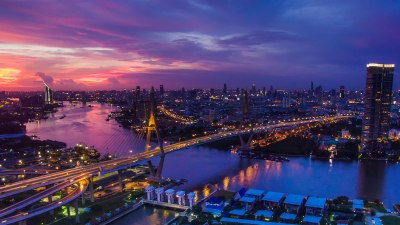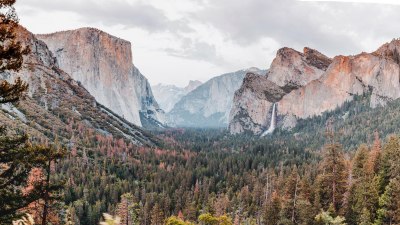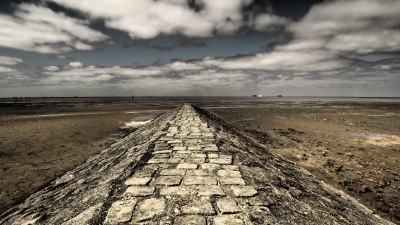Visiting the World’s Most Remote and Isolated Islands
Explore the unparalleled beauty and adventure of the world's most secluded islands. Discover hidden gems and thrilling experiences.

Image by rawpixel.com on Freepik
When you think of unique travel experiences, the idea of visiting remote and isolated islands often comes to mind. These islands, far removed from the hustle and bustle of modern life, offer a chance to escape and immerse oneself in nature, culture, and tranquility. In this article, we will explore some of the world’s most remote islands, focusing on what makes each unique and desirable for adventurous travelers.
Challenges and Charm of Remote Travels
Traveling to secluded islands presents both challenges and rewards. Accessibility is a significant factor; many of these islands are not easy to reach, often requiring multiple flights or long boat rides. However, this seclusion is what ultimately makes them appealing. The charm of finding your paradise far away from the crowds mirrors the ultimate quest of discovering untouched beauty.
1. Tristan da Cunha, South Atlantic Ocean
Tristan da Cunha is often dubbed the world’s most remote inhabited island, situated approximately 2,400 kilometers from South Africa. This volcanic archipelago is home to a small population known for their resilience and sense of community. The island's inhabitants live primarily off fishing and agriculture, embracing a lifestyle that is both rugged and rewarding. Visitors can explore its dramatic landscapes, including cliffs, mountains, and beautiful grassy plains, all while experiencing a unique way of life. The main settlement, Edinburgh of the Seven Seas, offers a glimpse into this remote life.
2. Bouvet Island, Norway
Located in the South Atlantic, Bouvet Island is a Norwegian territory and is often considered one of the most remote islands in the world. It is uninhabited, covered in glaciers, and surrounded by treacherous waters, making it a destination only for the most intrepid explorers. Although there are no facilities for tourists, the island's stunning geography provides breathtaking sceneries, including steep cliffs and massive icebergs. Birdwatching is one of the few activities allowed here, making it a paradise for ornithologists. There are no regular tours, but a daring expedition can reveal the mesmerizing beauty of this icy land.
3. Kermadec Islands, New Zealand
The Kermadec Islands, situated northeast of New Zealand, comprise a group of volcanic islands known for their incredible biodiversity and pristine environments. The islands are a part of the Kermadec-Tonga subduction zone, which creates unique geological features. The islands are uninhabited and accessible via private yacht charters or research expeditions. Visitors can enjoy hiking, snorkeling, and a chance to see rare wildlife, such as the Kermadec petrel and the red-crowned parakeet. The rich underwater ecosystems also make it a great location for marine life enthusiasts.
4. Pitcairn Islands
Famous for its historical significance, the Pitcairn Islands consist of four volcanic islands and are located in the southern Pacific Ocean. The islands are known for being settled by the mutineers of the HMS Bounty in 1789. Today, only around 50 residents call this isolated paradise home. The island’s inhabitants are known for their hospitality and unique culture that stems from their Polynesian and British roots. Visitors can engage in eco-tourism activities like hiking and birdwatching, as well as learning about the islands’ intriguing history. The remoteness and charm of Pitcairn make it a truly special destination.
5. Socotra, Yemen
Socotra is often described as the ‘Galapagos of the Indian Ocean’ due to its extraordinary range of endemic species. Located off the coast of Yemen, this isolated island has a unique biodiversity that has developed over millions of years. With an array of otherworldly landscapes, including the legendary Dragon's Blood Tree, Socotra offers an unparalleled ecological experience. Although there are security concerns in surrounding areas, visitors can explore the island’s stunning beaches, diverse flora and fauna, and ancient cultural heritage. This island is perfect for those looking to step into a natural wonderland untouched by time.
6. Macquarie Island, Australia
Macquarie Island lies halfway between New Zealand and Antarctica and is famous for its wildlife, particularly king penguins and elephant seals. This sub-Antarctic island is a UNESCO World Heritage Site and is known for its rugged beauty, including dramatic landscapes shaped by tectonic activity. Visitors typically reach Macquarie Island via scientific expeditions or eco-tours, and it is a coveted destination for serious adventurers and researchers alike. The chance to observe wildlife up close in such a pristine environment attracts many nature lovers, making it a must-visit for those passionate about conservation.
7. Cocos (Keeling) Islands, Australia
Located in the Indian Ocean, the Cocos (Keeling) Islands are a group of 27 coral islands that are part of Australia. The islands are renowned for their idyllic beaches, crystal-clear waters, and rich tropical flora. While they may be remote, the islands attract travelers seeking relaxation and adventure in equal measure. Activities include snorkeling, diving, and enjoying the local cuisine, which features a blend of Malay and Australian influences. Cocos is not just about the beauty; it is also an opportunity to learn about the history of the local Cocos-Malay culture and their way of life.
8. Marcos Island, Brazil
Marcos Island, often overlooked due to its distant location in Brazil, is an isolated paradise known for its stunning beaches and vibrant marine life. Situated near the Antarctic, the island has a unique flora and features beautiful rock formations. This hidden gem is primarily unexplored, which means that adventurous travelers can indulge in activities like hiking, snorkeling, and wildlife observation without the interruption of crowds. The island’s remoteness ensures that visitors can truly immerse themselves in nature while enjoying the breathtaking vistas that surround them.
9. Raoul Island, New Zealand
Part of the Kermadec Islands, Raoul Island is famous for its untouched landscapes and wildlife. This volcanic island offers diverse ecosystems, with hiking trails leading to stunning vistas and unique flora such as the rare Rarotongan native forest trees. The island provides opportunities for birdwatching, camping, and exploring its lush interiors. Raoul Island is uninhabited, with only research stations occasionally set up to conduct scientific studies, enhancing its status as one of the least disturbed ecosystems on the planet.
10. Campbell Island, New Zealand
Campbell Island, another isolated sub-Antarctic locale, is renowned for its stunning scenery and rich wildlife. As part of the New Zealand sub-Antarctic islands, it is characterized by rugged coastlines and flourishing fauna, including albatrosses and sea lions. Campbell Island is also essential for conservation, as it has ongoing restoration projects focusing on protecting its delicate ecosystems. Visitors here can explore remarkable landscapes and learn about conservation initiatives aimed at preserving the island's unique heritage.
Essential Travel Tips for Remote Islands
Visiting these remote destinations requires careful planning. Here are some essential tips to ensure safe and enjoyable travels:
- Research: Understand the island’s accessibility, weather conditions, and specific travel requirements before planning your trip.
- Pack Wisely: Due to limited resources, pack essential supplies, medications, and gear for outdoor activities.
- Stay Flexible: Schedules can change due to weather or transport issues; ensure your plans can adapt accordingly.
- Engage Locally: Learn about the culture and history of the islands to enrich your travel experience.
- Contribute to Conservation: Practice sustainable tourism by respecting wildlife and natural habitats during your visit.
Visiting the world's most remote and isolated islands offers an unparalleled travel experience unlike any other. These destinations provide not only breathtaking landscapes and unique wildlife but also a chance to connect with nature in ways that urban settings cannot offer. The remoteness of these islands challenges travelers to go beyond their comfort zones and discover the beauty of simplicity. As explorers venture off the beaten path, they contribute to the preservation of these unique environments, ensuring that future generations can also experience the serenity and splendor of these remote paradises.











